Related Research Articles

Sir James Martin, QC was three times Premier of New South Wales, and Chief Justice of New South Wales from 1873 to 1886.
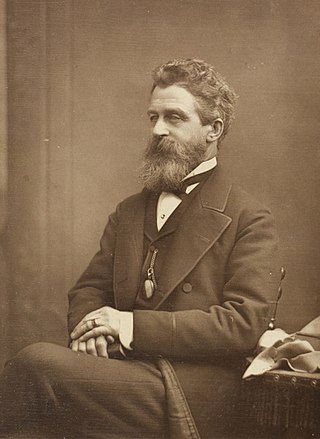
Sir Daniel Cooper, 1st Baronet was a nineteenth-century politician, merchant and philanthropist in the Colony of New South Wales. He served as the first speaker of the Legislative Assembly of the colony and was a noted philatelist.
This is a list of members of the New South Wales Legislative Council from 1843 to 1851. The 1843 Electoral Act prescribed 36 members, 24 to be elected, 6 appointed by virtue of their office and 6 nominated. The appointments and elections were for five year terms and thus occurred in 1843, and 1848. The Speaker was Alexander Macleay until 19 May 1846 and then Charles Nicholson. The parliament was dissolved on 30 June 1851 as a result of the 1851 Electoral Act which increased the number of members in the Council to 54.
The Electoral district of City of Sydney was an electorate of the New South Wales Legislative Council.

The Electoral district of County of Bathurst was an electorate of the New South Wales Legislative Council at a time when some of its members were elected and the balance were appointed by the Governor.

The Electoral district of County of Argyle was an electorate of the New South Wales Legislative Council at a time when some of its members were elected and the balance were appointed by the Governor.
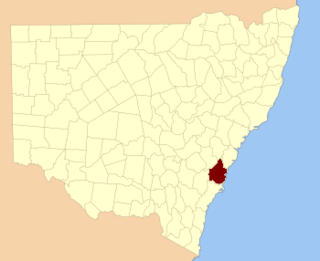
The Electoral district of County of Camden was an electorate of the New South Wales Legislative Council at a time when some of its members were elected and the balance were appointed by the Governor.

The Electoral district of County of Durham was an electorate of the New South Wales Legislative Council at a time when some of its members were elected and the balance were appointed by the Governor. It was named after Durham County, which lies on the north side of the Hunter River.

The Electoral district of County of Cumberland was an electorate of the New South Wales Legislative Council at a time when some of its members were elected and the balance were appointed by the Governor.

The Electoral district of Counties of Gloucester, Macquarie, and Stanley and from 1851, Gloucester and Macquarie, was an electorate of the partially elected New South Wales Legislative Council, created for the first elections for the Council in 1843. The counties of Gloucester and Macquarie were the settled coastal areas north of Northumberland County, while the County of Stanley was the area surrounding Brisbane, in what became part of Queensland after its separation in 1859. Polling took place at Raymond Terrace, Port Macquarie, Dungog, Stroud, Brisbane, Ipswich and Mr Rowley's residence on the Manning River. The County of Stanley was removed from the district with the expansion of the Council in 1851 and became the districts of County of Stanley and Stanley Boroughs.
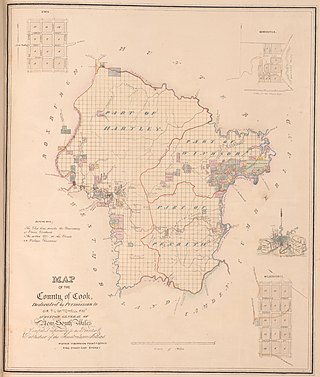
The Electoral district of Counties of Cook and Westmoreland, also known as the United Midland Counties of Cook and Westmoreland, was an electorate of the New South Wales Legislative Council at a time when some of its members were elected and the balance were appointed by the Governor.
The electoral district of Cumberland Boroughs, also known as the united towns of Windsor, Richmond, Liverpool and Campbelltown, was an electorate of the New South Wales Legislative Council at a time when two thirds were elected, one sixth were official members, that is they held a government office and the balance were appointed by the Governor.
The 1843 New South Wales colonial election, the first in the colony, was held between 15 June and 3 July 1843, to elect 24 members from 18 electoral districts. Each district returned 1 member except for Port Phillip which returned 5 members while County of Cumberland, and Town of Sydney returned 2 each.
The 1848 New South Wales colonial election was held between 29 July and 2 August. No candidates were nominated for Port Phillip as a result of the campaign for independence from New South Wales, and a fresh writ was issued for an election on 3 October.
The Electoral district of Counties of Murray, King and Georgiana and from 1851, Counties of King and Georgiana was an electorate of the partially elected New South Wales Legislative Council, created for the first elections for the Council in 1843. The electoral district included the south western counties of Murray, King and Georgiana. Polling took place at Queanbeyan, Yass and Wheeo, which were within the counties and the nearby towns of Braidwood, Goulburn and Bathurst. The towns of Queanbeyan and Yass were removed from the district with the expansion of the Council in 1851 and combined with Braidwood and Goulburn to form the Southern Boroughs. The rural area of the County of Murray became part of the Counties of Murray and St Vincent and leaving the district to cover the remaining rural areas of the Counties of King and Gergiana.
The Electoral district of Counties of Roxburgh, Phillip and Wellington and from 1851, Roxburgh and Wellington, was an electorate of the partially elected New South Wales Legislative Council, created for the first elections for the Council in 1843. The electoral district included the western counties of Roxburgh, Phillip, Wellington County. Polling took place at Montefiores, Mudgee, Bathurst and Hartley. The County of Phillip was removed from the district with the expansion of the Council in 1851 and became part of the Counties of Phillip, Brisbane and Bligh.
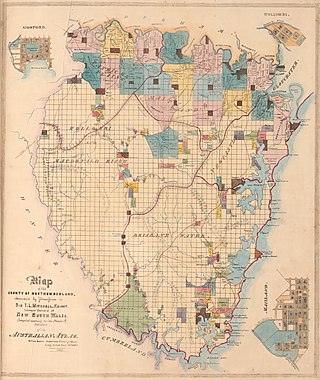
The Electoral district of Northumberland Boroughs was an electorate of the partially elected New South Wales Legislative Council, created for the first elections for the Council in 1843. From 1843 until 1851 the electorate covered the major towns or boroughs of Northumberland County, East Maitland, West Maitland and Newcastle, and polling took place at East Maitland, West Maitland and Newcastle. Morpeth was added to the electorate from 1851 while Newcastle was removed from the electorate to form, with Raymond Terrace, the North Eastern Boroughs. The rest of Northumberland County was covered by the County of Northumberland from 1843 until 1951, and Counties of Northumberland and Hunter from 1851 until 1856.
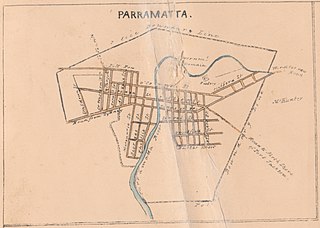
The Electoral district of Town of Parramatta was an electorate of the partially elected New South Wales Legislative Council, created for the first elections for the Council in 1843, at the time the principal residence of the Governor Sir Charles FitzRoy. Polling took place at Parramatta. In 1856, the unicameral Legislative Council was abolished and replaced with an elected Legislative Assembly and an appointed Legislative Council. The district was represented by the Legislative Assembly Parramatta, the only electorate to have existed continuously since the first Legislative Assembly election in 1856.
The Electoral district of Counties of Murray and St Vincent was an electorate of the New South Wales Legislative Council at a time when some of its members were elected and the balance were appointed by the Governor. It was a new electorate created in 1851 by the expansion of the Legislative Council to 54, 18 to be appointed and 36 elected. The district consisted of the rural areas of Murray County, which had previously been part of Counties of Murray, King and Georgiana, and St Vincent County, which had previously been part of Counties of St Vincent and Auckland. The towns of Braidwood and Queanbeyan were not part of the district, being included in Southern Boroughs.
References
- 1 2 "An Act to provide for the division of the Colony of New South Wales into Electoral Districts and for the Election of Members to serve in the Legislative Council.". Act No. 16 of 23 February 1843 (PDF). Australasian Legal Information Institute. Retrieved 28 May 2019.
- ↑ "Polling places". The Sydney Morning Herald . 14 July 1848. p. 2. Retrieved 28 May 2019– via Trove.
- ↑ "An Act to provide for the division of the Colony of New South Wales after the separation of the District of Port Phillip therefrom into Electoral Districts and for the Election of Members to serve in the Legislative Council.". Act No. 48 of 2 May 1851 (PDF). Australasian Legal Information Institute. Retrieved 27 May 2019.
- 1 2 "Mr John Coghill". Former members of the Parliament of New South Wales . Retrieved 28 May 2019.
- ↑ "Robert Lowe (1811-1892)". Former members of the Parliament of New South Wales . Retrieved 28 May 2019.
- 1 2 "Mr George Hill (1802-1883)". Former members of the Parliament of New South Wales . Retrieved 28 May 2019.
- ↑ "Sir Daniel Cooper, Bt (1821-1902)". Former members of the Parliament of New South Wales . Retrieved 28 May 2019.
- ↑ "News from the interior: Braidwood". The Sydney Morning Herald . 23 June 1843. p. 2. Retrieved 23 May 2019– via Trove.
- ↑ "Advertising". The Sydney Morning Herald . 22 March 1845. p. 1. Retrieved 28 May 2019– via Trove.
- ↑ "Braidwood". The Sydney Morning Herald . 25 April 1845. p. 3. Retrieved 28 May 2019– via Trove.
- ↑ "Election for St Vincent and Auckland". The Sydney Morning Herald . 22 August 1848. p. 2. Retrieved 26 May 2019– via Trove.
- ↑ "Proclamation". New South Wales Government Gazette . No. 95. 25 August 1848. p. 1138. Retrieved 27 May 2019– via Trove.
- ↑ "Advertising". The Sydney Morning Herald . 24 May 1849. p. 1. Retrieved 28 May 2019– via Trove.
- ↑ "Braidwood". The Sydney Morning Herald . 22 June 1849. p. 2. Retrieved 28 May 2019– via Trove.
- ↑ "The elections". The Sydney Morning Herald . 28 June 1849. p. 2. Retrieved 28 May 2019– via Trove.